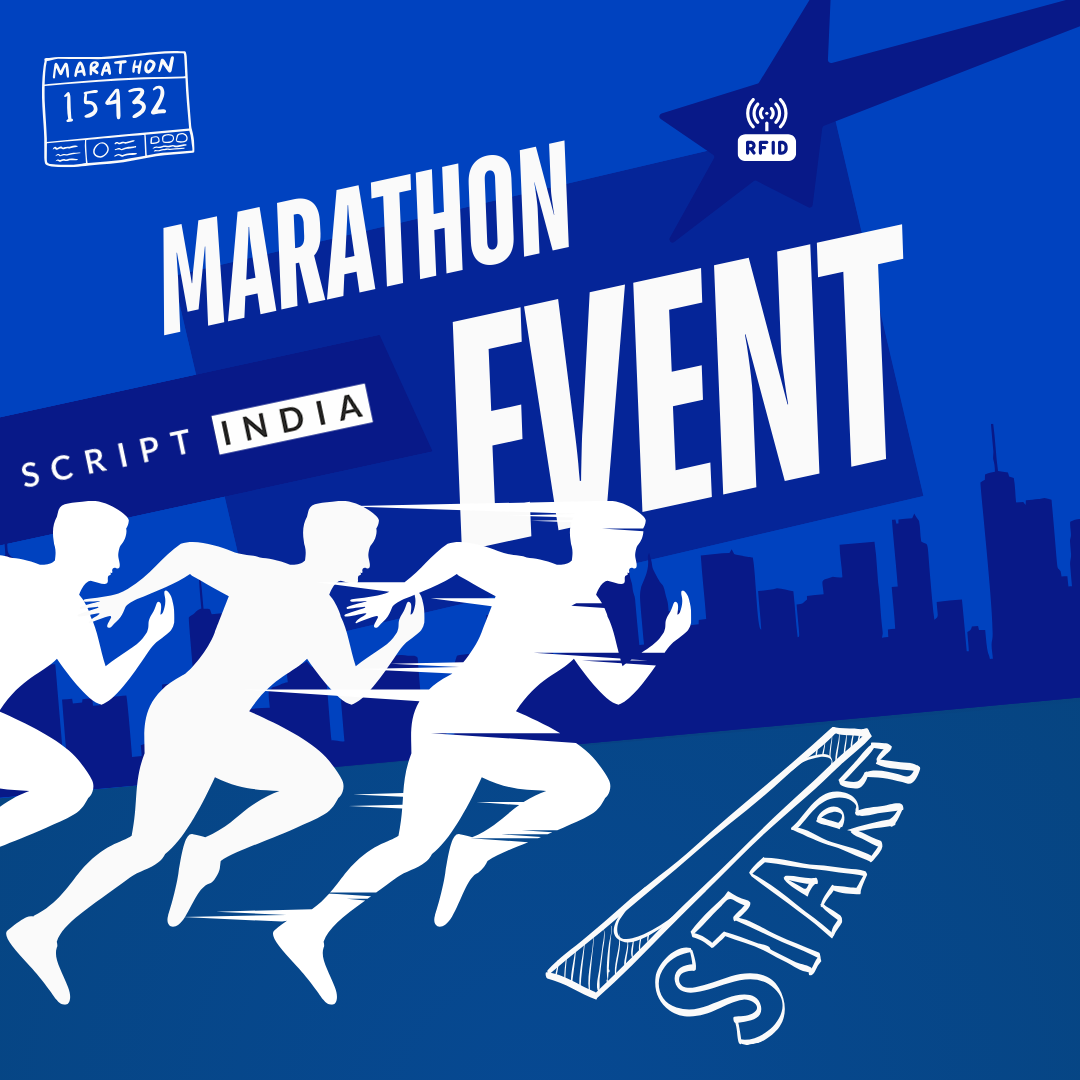Marathon Timing Solutions

RFID
RFID (Radio Frequency Identification) tracking in marathons is an advanced and efficient system used to monitor runners in real-time. This technology ensures accurate timing, enhances race management, and improves the overall experience for participants and organizers. Here's how it works:
-
RFID Tags
-
RFID Readers
-
Antennas
-
Timing System
-
Central Database
-
Mobile/Web Application
-
Accurate Timing
-
Real-time Tracking
-
No Manual Intervention
-
Post-Race Analytics
-
Enhanced Security
Components of RFID Marathon Tracking
RFID Tags
-
Each runner wears an RFID tag, usually attached to their bib number.
-
These tags contain a unique ID number that is transmitted wirelessly.
RFID Readers
-
Placed at various checkpoints along the marathon route (starting line, split times, finish line, etc.).
-
As runners pass the readers, the RFID tags are detected, and data is transmitted to the race organizers.
Antennas
-
These are connected to the RFID readers and enhance their range, helping to detect the tags over larger distances.
Timing System
-
Each RFID reader logs the timestamp when it detects a tag, which helps track the runner’s progress and calculates their time at different points of the race.
-
This information can be used for live tracking, and to calculate split times for participants.
Central Database
-
The collected data from all RFID readers is sent to a central system where it is stored and processed.
-
This database is used to provide real-time updates on runner progress, finishing times, and overall ranking.
Mobile/Web Application
-
Runners, spectators, and event organizers can track runners on website, showing the runner’s position at various checkpoints.
Benefits of RFID in Marathon Tracking
Accurate Timing
RFID tags provide precise timing at multiple checkpoints, ensuring accurate race results.
Real-time Tracking
can follow runners live via mobile apps or websites.
No Manual Intervention
Automatic logging of runners' times eliminates human errors and the need for volunteers to manually record results.
Post-Race Analytics
After the race, organizers can analyse performance, segment times, and gather insights for future events.
Enhanced Security
RFID helps identify each runner individually, reducing the chance of fraud or improper race entry.
